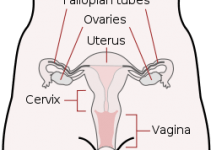As a woman, you might want to know your ovulation time to increase your chances of getting pregnant. The same with menstruation, ovulation periods are different for each woman so you need to have a better understanding of how it works. In addition to that, you will also be able to check for abnormal symptoms in ovulation and address them accordingly.
If your aim is not to get pregnant at a certain time, you will still benefit from having the proper understanding of your ovulation cycles as well as your menstrual periods.
How can you calculate your ovulation period effectively?
You can calculate your ovulation with the help of a calendar, an ovulation prediction kit and by taking your basal body temperature.
Calendar
Having sex on the exact date of ovulation is, of course, a great way to ensure conception but there’s actually a six-day rule of fertility in your monthly cycle. The optimum time is within the 2-3 days before the exact ovulation day and that day itself since it’s when you are most fertile.
When your egg is released, the most viable time frame for it to develop is within twelve to twenty-four hours. But if you fail to conceive in that given time, you will have to wait for your next cycle to get pregnant.
For those who are not yet ready to have a baby though, you still need to use some contraceptive despite having sex during non-ovulation period as a precaution.
Ovulation prediction kits
Since ovulation for most women hits from ten to twelve hours after their levels of luteinizing hormone (LH) is at the peak, the ovulation kit can measure it effectively.
For women with a 28-day menstruation cycle, LH peaks usually on the fourteenth or fifteenth day. For the full maturity of your egg, LH concentration within fourteen to twenty-seven hours should stay elevated.
How do OTC Ovulation prediction kits work?
Although not scientifically proven, many prediction kits advise to get your test in the morning right after you wake up. You simply pee on the stick, wait for a while until a line will appear.
Take note of the color in the line – if it matches that of the instructions shown, then ovulation will happen for twenty-four to forty-eight hours. But if it’s too close, you can take the test
again in the next twelve hours or less.
To get the best result, you should cut back on your water intake for about four hours before the test. It will lead to having a more concentrated urine which will make your LH level much easier to detect.
Basal body temperature
Basically, your BBT is the temp of your body when totally at rest and not doing anything. The average BBT for women at the beginning of their cycle is at 97.2 and 97.6 degrees F. There will be a bit of dip just as the ovulation period began – usually from 0.4 to 1.0 degrees.
However, you need not be too concerned right away because the BBT will naturally fluctuate from time to time. To solve this, you should track your BBT for several months first (3-4 months will do) so that you’ll know for sure when is the best time to try to get pregnant.
Understanding your ovulation and chances of getting pregnant will also require you to know the most common or usual ovulation symptoms.
 Ovulation generally takes place for a couple of days, after the last day of the menstrual period. In this time, you will notice a few changes in your body. It is very important to know your body and pay attention to those conditions to predict your ovulation symptoms.
Ovulation generally takes place for a couple of days, after the last day of the menstrual period. In this time, you will notice a few changes in your body. It is very important to know your body and pay attention to those conditions to predict your ovulation symptoms.
Keep reading below if you want to conceive and need to know about a few of the common symptoms that you might notice during ovulation.
Usual Ovulation Symptoms
First of the typical ovulation symptoms include a rise in the cervical mucus or vaginal discharge.
This is probably the most obvious and the most common one. During your ovulation period, you might notice an increase of vaginal discharge or mucus that is slippery and transparent with an egg white consistency.
Women are fertile during these times, but they are more likely to conceive on the last of the vaginal discharge when it becomes even more intense. Cervical mucus is the fluid that makes it easier for the sperm to travel to the cervix as well as the eggs, thus improving one’s chances of getting pregnant.
Another symptom would be a change in the position and firmness of the cervix. In some cases, women feel a slight pain or ache in one section of their abdomen or stomach. This can last for a few seconds or as much as two hours.
One of the other usual ovulation symptoms would be an increase in the luteinizing hormone levels. This hormone would increase right before ovulation. An ovulation prediction test can help you to detect this, but it cannot guarantee that you will ovulate.
Besides that, there are known instances of early conception and ovulation, something that might affect the common pattern of your regular cycles.
Light spotting is a symptom that you might notice during ovulation. Some women even experience abdominal bloating as well tender or swollen breasts. In other cases, the symptoms include an enhanced sense of taste, vision or smell as well as a heightened sex drive.
Your ovulation temperature can be higher than your normal body temperature, a symptom that you can measure with a thermometer.
When you know the usual ovulation symptoms and the tools that you can use to calculate and measure ovulation, this will increase your chances of becoming pregnant.
If you are really serious about conceiving, you should look for early symptoms such as frequent urination, swollen breasts, and nausea after sexual intercourse.
Image: Pixabay




My date of birth is 1974 January 1. My last two periods are 8 June 2018 and 5 July 2018. Now I want to try for a baby boy which time is best? Please reply me.
Hello Krish, see link below with tips on how to conceive a baby boy:
https://womanjunction.com/tips-conceive-boy/
Hi, am Rodah, I had my periods on 10/07/2018 to 12.and I want to conceive a boy. When is the best date?
Hello Rodah, see link below to help you with this:
https://womanjunction.com/tips-conceive-boy/
Am Ngozi,I saw my period on 2 July and it end on 4.Pls when can I convice a baby boy
Hi Ngozi, based on a 28 day cycle your fe3rtile period would be between the12 and the 16th. They say boys are conceived early in the fertile period because they move slower.
Hi, me and my partner are ttc. My last period was June 12 and lasted until June 15, I have a short period but regularly comes every month. We had sex on the 23rd and 24th of June. And for the first time I experienced swollen breast and felt dizziness the following morning upon waking up. And it lasted for about 3 days. Then came back on the 30th of June and until now I’m still having swollen breast, dizziness, frequent urination and lower back pain. My period will be on July 10 and I’ve done early pregnancy test at home on July 4 and it shows up negative . Is it still possible I am pregnant coz I am still experiencing those signs?
Hi Mike, those symptoms you wouldn’t see the next day. It’s quite possible that you are just sick. I would wait to take any tests until after you miss your period if you do. PLus you could have been testing too early as well. Good luck.
Thanks to your reply daniela, I was just thinking I ovulated on the 24th of June because of what I felt. Hoping we did it this time 😊
Good luck!
Just want to share the good news, I am now 5weeks pregnant! I was right all along when I felt the signs thanks God for another blessing! Goodluck to everyone here who were ttc…😊
Hi there Mie, congrats! See below:
https://womanjunction.com/important-precautions-during-early-pregnancy/
Hi, I’m Geraldine. Started my period on 5th of June and ended on 10th. Met with my boyfriend on 12th.. Is there a possibility of getting pregnant?
Hi Geraldine, this would have fallen before your fertile period unless you have a short cycle.
Hi I’m Anna.
Saw my period after 42 days
I spotted for a day or two before I finally saw a proper period.
Breast got tender and I got drops of breastmilk when I squeeze my nipples.
I got a pregnancy test but it was negative.
This is almost 2-3months and I’ve seen two periods, I don’t feel nausea.
Scared I may be pregnant or just undergoing hormonal change. Pls help
Hello Ann, see your doctor about this as soon as you can. It is hard to virtually provide a diagnosis for this.
Hi,I am JP my last period was 8 January and it lasted 7 days and I on 22 February I and very small blood for 2 days so my boyfriend had an accident on 4 March 2018 and I went to the clinic 15 march to get tested for pregnancy it come negative and I haven’t seen my period ever since 8 january 2018 please help me I really want to know if ever I am pregnant.
Hi JP, did you take another pregnancy test at home by any chance? I would do that. But if you don’t get a period that means you aren’t ovulating. If you are trying to get pregnant then track your periods and then you can determine the best time to have sex to do so.
Hi I am Ay, I had sex on 5th day to my period and feel pregnancy symptoms like nipple pain on the third day to my period,though it relieved me on the 2nd day my period started. I am still feeling I am pregnant, is it possible am pregnant?
Hi there Ay, if you think you are pregnant please take a pregnancy test to determine this. Most accurate when taken 10 days after a missed period.
Hi, I have an irregular period but my last period was on 4/FEB/2018- 8/FEB/2018 and on the day of my supposed ovulation and the day after my breasts was extremely tender and I had really bad abdominal pain…Just wondering if this could actually be my first pregnancy….THANKS IN ADVANCE
Hi Christina, those symptoms right at the time of your ovulation are generally your body reacting to ovulating. You won’t know if you are pregnant until you miss your period, which depending on your cycle should be coming up around the 4th of March. Good luck!
Hi, I’m Ay I had my period on 29 of January and ended on February 2. I had sex on the 2 of February and 9, 11 of February. Am I pregnant?
Hi Ayo, Based on the information you gave it’s quite possible that you could get pregnant as your fertile days as per the handy calculator found Here Are from February 8th through the 12th. The only way to know for sure is to take a pregnancy test after you miss your period.
Hi
Hi I had my period on the 8th of December and it finished on the 12th of December, then it started on the 20th of January for 6 days but I am still feeling like I am pregnant. My mouth feels full of water, everything I eat I feel like I want to vomit after, my nipples hurt. Can I have my period and still be pregnant?
Hi Kelia,
While you may have vaginal bleeding while pregnant, it’s not necessarily a period. Secondly, if you feel you are pregnant. If you are bleeding and it’s a normal cycle, the feelings that you have can just be hormones. But If you are concerned, take a pregnancy test but while you may have vaginal bleeding you’ll want to get checked out, especially if you are in deed pregnant.
Hi, I am Yanggum, my period started on 28/12/17, ends on 1/1/18. When is the right time for me to conceive boy child? In how many days should I need to have sex in order to get boy?
Hello Hiba, please see the link below to help you on choosing the best days to try to conceive a boy baby: https://womanjunction.com/tips-conceive-boy/
good day
I would like to know,my wife start menstruate 07/10/2017.End 11/10/2017
when is the right time she must make love to fall pregnant
saul
Hello Gajo, please use link below to calculate her most fertile days: https://womanjunction.com/
Hi I’m trying to get pregnant since I’m turning 43. My last period was on July 8. And we had unprotected sex on July 19, 21 & 23. Is there a possibility for me to get pregnant? Could you help me please? Thanks & God Bless!
Hello Inday, please use the following link to help you calculate your most fertile days: https://womanjunction.com